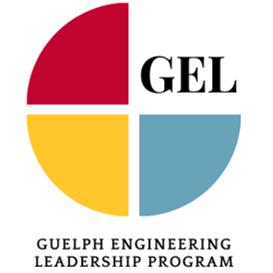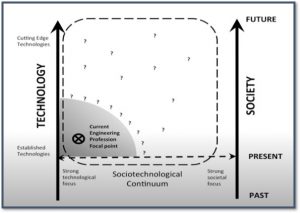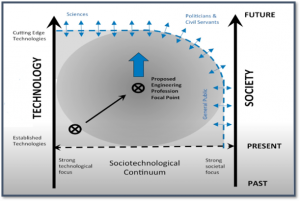Workshop 5: Technological Stewardship and The UN Sustainability Goals
Tiana Bressan; John Donald; and Technical Editor: Nicholas Yip

INTRODUCTION
LEARNING OBJECTIVES
Following this workshop, students should be able to:
- Understand the relationship between technology and society
- Recognize the key principles of Technological Stewardship
- Relate the stewardship principles to the UN Sustainable Development Goals
- Be able to discuss the importance of the SDGs and the CEGCs in a societal context
TECHNOLOGY AND SOCIETY
“The evolution of new technology is inevitable; we can’t stop it. But the character of each new technology is up to us”
– Kelvin Kelly
Some may argue that technological advancements are the driving force behind the advancement of society, such as in the cases of medical advancements. Others may argue that societal issues drive the need for greater technological advancements, and ultimately society is what chooses whether to accept or reject new developments. While there may not be a clear answer, it can be clearly seen that both technology and society are deeply intertwined, with a cycle of societal issues and technological advancements.

As we move into the future, and we solve more and more problems, society becomes increasingly dependent on technology to the extent that it almost “disappears” as it becomes more integrated and normalized.
THE SOCIOTECHNOLOGICAL CONTINUUM
However, a shift is starting to occur as engineers realize the importance of Sociotechnological Leadership. As a professional engineer, it is necessary to not only consider the feasibility of technology, but also how it might affect both individuals and society as a whole. As the relationship between society and technology rapidly evolves, so too must the role of engineers.


TECHNOLOGICAL STEWARDSHIP
What is Technological Stewardship?
“Behaviour that ensures technology is used to make the world a better place for all – more equitable, inclusive, just and sustainable”
– The Engineering Change Lab (2016, May 30)
People often confused stewardship with sustainability, but stewardship often involves much more than just sustainability. It is more of an umbrella term, inclusive of taking responsibility, practicing inclusivity and equity, being committed to service and of course sustainability. The term represents a shift from an old to a newer paradigm, moving away from just developing technologies due to market pressures, but instead keeping in mind the broader implications of technological innovations. This process could include anything ranging from keeping in line with industry standards, to analysing the environmental impacts of products, to considering the larger societal impacts of new technologies. The overall goal is to try to see the bigger picture, asking ‘why’ instead of just ‘can it be done’.
Achieving Technological Stewardship
For engineers to take a leadership role in addressing problems using technological stewardship principles, we require a new framework of thinking that takes into account the ocmlex relationship between society and technology.
For this purpose, the Engineering Change Lab has created a set of principles that the engineering community and individuals should strive to exhibit.
- Seek Purpose
- Take Responsibility
- Expand Involvement
- Widen Approaches
- Advance Understanding
- Realize Diversity
- Deliberate Values
- Shared Action
ACTIVITY 1: Technological Stewardship Principles
This activity is best done with a partner or a group. Using the topics provided on the worksheet, select the one which you’d like to use the Engineering Change Lab’s stewardship principles to explore. Given the chosen scenario, create arguments for and against the topic using the outlined stewardship principles. Once these arguments have been created, debate your chosen viewpoints amongst yourselves.
Example
Autonomous vehicles are capable of sensing their environment far better than a human could, and is not susceptible to alcohol abuse, speeding and distractions. This makes autonomous vehicles far safer than human-operated vehicles, and thus we should focus on developing safe, widely-available autonomous vehicles in the upcoming future.
Autonomous vehicles have a few obvious benefits, but they also come with the risk of many unintended consequences. Of these risks, a major concern should be the potential to be hacked, and use for malicious acts. Due to this, if autonomous vehicles are meant to be pursued, we must take responsibility for developing adequately safe software that always protects both passengers and pedestrians.
UNITED NATIONS SUSTAINABLE DEVELOPMENT GOALS
On September 25, 2015, the UN general assembly adopted the resolution entitled “Transforming Our World: The 2030 Agenda for Sustainable Development”. This consisted of 17 goals meant to act as a blueprint to achieve a better, more sustainable future for all, and was adopted by all UN Member states in 2015.

These Sustainable Development Goals (SDGs) not only include basic necessities, but also encompass many aspects of everyday life. As engineers, we have influence over many of these topics, such as how people live, and how we transform our environments. Therefore, when making changes, we must design solutions with a clear view of what we hope to accomplish, not just today, but in the future. The development of solutions for these SDGs will therefore require a wide range of skills and a lot of lateral thinking.
CANADIAN ENGINEERING GRAND CHALLENGES
ACTIVITY 2: Canadian Engineering Grand Challenges
As a group, select the CEGC which you believe is critical to accomplish within the next 10 years. Using the provided worksheet as a guide, discuss reasons for this immediate importance and contemplate the challenges that will likely be faced in tackling this issue. When having these discussions, keep in mind the role of the Engineering profession as a whole in solving the problem.
Example
Access to affordable, reliable and sustainable energy is an issue faced by many countries. In Canada, there are already plans in motion to shift to more renewable and sustainable energy sources, but we as engineers must also consider the societal implications of these scenarios. Energy consumption will only increase in the future due to our increasing reliance on technology, and thus this is an important goal to accomplish. In trying to achieve this goal, however, it is important to consider the stewardship principles along with the feasibility of a solution. We must ensure that our means of sustainable energy production is available to all, and that our methods of production do not disproportionally affect communities throughout the country. Though we might already have some of the technology and infrastructure for such changes, other societal and political factors must also be overcome before we can truly realize true reliable, affordable and sustainable energy for everyone.
WORKSHOP WRAPUP
Engineering currently places a lot of focus on technological development, rather than its societal impact. With technology and society being so heavily intertwined, only getting more integrated as time goes on, a shift must occur within the field of engineering to put more emphasis on the societal implications of new technologies. As engineers affect many people with their decisions, they must be stewards of technology, taking responsibility for sustainability, inclusivity and equity of their solutions, in addition to the feasibility of their proposals.
The United Nations SDGs, along with the CEGCs, provide a good insight into how multifaceted the problems we face as a society are. Achieving these goals will require a lot of creativity and ingenuity to solve, necessitating strong Sociotechnological Leadership and a heavily interdisciplinary approach to problem-solving.

